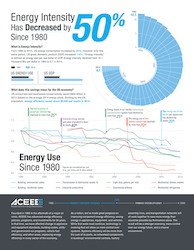Trevor Day School, located in New York City, is using geothermal for energy and education. The technology used is the first by an educational institute as well as the first on the East Coast to contribute to New York City Mayor Bill de Blasio’s goal to reduce greenhouse gas emissions (GHGs) by 80 percent prior to 2050.
The system contains structural piles that are made from reinforced concrete. They are turned into heat exchangers by adding loops of plastic pipes down their length with some going more than 80 feet deep. They provide both support for the building, but also allow the structure to extract and store heat from the earth to use in heating and cooling the building.

A view from First Avenue of Trevor’s new LEED qualifying, state-of-the-art, geothermal school building; a first of its kind on the East Coast. (Photo: Business Wire)
To learn more about the project, DomesticFuel spoke to several of the project team members including Michael Paquette, P.E. senior project engineer for Langan. He explained that this technology was different than many current geothermal projects.
On ‘traditional’ geothermal projects, the geothermal loops are installed in boreholes drilled specifically to install the geothermal loops, or in shallow trenches excavated specifically for geothermal loops, explained Paquette. However, at Trevor Day School, the geothermal loops were installed in pile foundations that were already required for the building (hence the term ‘energy piles’).
“The value of the energy piles is that the piles must be installed for the building’s foundation support, so adding geothermal loops inside the piles themselves is a relatively lower cost compared to drilling dedicated boreholes for the geothermal loops,” continued Paquette. “The piles serve dual purpose as foundation support and energy transfer. Although energy piles are becoming more common in Europe, Trevor Day School is one of the first projects in the USA to use this technology and will hopefully serve as a catalyst for other developers in the U.S. to consider this technology.”
What is the return on investment of this clean energy technology? Read More










